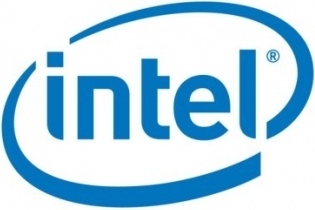 Written by Chris Gough, Healthcare Solutions Architect at Intel Corporation as he shares five reasons why medical imaging is ready for the cloud.
Written by Chris Gough, Healthcare Solutions Architect at Intel Corporation as he shares five reasons why medical imaging is ready for the cloud.
Healthcare enterprise organizations have been exercising caution with cloud adoption due to the regulated nature of the industry and desire to maximize return on existing (on-premises) IT investment. However, I am seeing accelerated adoption of SaaS (software-as-a-service) applications and expect this trend to continue.
In previous blogs (here and here), I’ve described some of Intel’s collaborative efforts with healthcare cloud providers working on medical imaging solutions. Let’s take a closer look at some of the key reasons why medical imaging lends itself especially well to the benefits enabled by cloud computing:
1. Exponential Growth of Imaging Data: The amount of data stored by healthcare organizations is doubling every 18-24 months, and in large part this is driven by medical imaging. As higher image resolutions are supported and richer media becomes more commonplace (e.g. video, 3D), the problem gets worse. Although medical images are rarely accessed more than a few months after they are captured, they are stored for many years to satisfy retention requirements, further increasing demand for storage capacity. The need to manage and scale the infrastructure to support medical imaging is putting significant time/cost pressure on Health-IT departments.
2. Loosely-Coupled Nature of PACS (Picture Archiving and Communication System): There are a lot of PACS vendors out there. Most EMR (electronic medical record) applications treat PACS as a loosely coupled system and have mechanisms to support integration with various solutions. Consuming PACS via the SaaS model will be much more straightforward and less disruptive to clinical end users than would be the case if PACS was tightly integrated with the EMR.
3. Pressure on Health-IT Departments to do More with Less: The healthcare industry is anything but static. Demands resulting from healthcare legislation & regulations coupled with trends such as BYOD (Bring your own device) are definitely keeping Health-IT departments busy. Evaluating applications against organization-defined criteria for SaaS suitability, and outsourcing where it makes sense to do so can enable IT to focus more time on strategic investment areas rather than “keeping the lights on”.
4. Need for Improved Access & Mobility: There is an increasing desire to access images anywhere, anytime, on any device in order to support a wide range of clinical workflows (e.g. diagnostic imaging on a workstation, reviewing an image with a patient on a mobile device at the point of care, etc.). SaaS applications are typically very mobile and support a wide range of client devices.
5. Technology Innovation: Several technology innovations have enabled medical imaging solutions to be delivered efficiently from the cloud. Virtualized, highly-scalable, servers and storage platforms enable large pools of computing resources that can be shared across applications. This reduces the solution cost (economies of scale) and improves agility (applications can respond automatically to fluctuations in demand). Converged networking solutions can manage network and storage traffic over the same unified fabric, reducing cables, complexity and cost. Improvements in server-side graphics capabilities enable images to be rendered in the cloud and streamed to client devices over low-bandwidth network connections.
Intel works closely with the software vendors, industry partners and organizations like the Open Data Center Alliance to ensure that our cloud solutions are scalable, secure, and meet the needs of the healthcare industry. If you have any thoughts to share on the application of cloud technologies to medical imaging or other healthcare systems, please add to the discussion below. You can also follow me@CGoughPDX on Twitter.
About Chris Gough:
Chris Gough is the lead Healthcare Cloud Computing Architect at Intel. He regularly meets with healthcare enterprise organizations around the world to advise them in the areas of cloud computing, virtualization and healthcare security & privacy. Chris also works closely with industry partners and customers to design, develop and publish industry proof points that take advantage of advanced Intel platform capabilities. Chris has been with Intel for over fifteen years, and was formerly both product and security architect in Intel’s Digital Health division. In this role, Chris was the chief architect for the flagship Independent Living product; Care Connect and chief architect of Integration Services for the Intel Health Guide. Chris has been an active member of the Continua Health Alliance and was one of the lead contributors to the end-to-end system architecture and interoperability guidelines. He holds a B.S. in Computer Science from the University of California at San Diego. Chris is a regular blogger on Intel Premier IT Professionals and has recently published a number of whitepapers and case studies that have been well-received by partners and customers alike.
